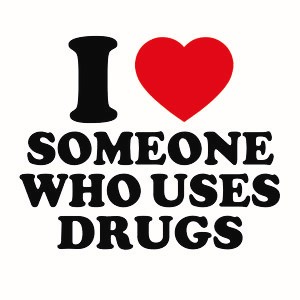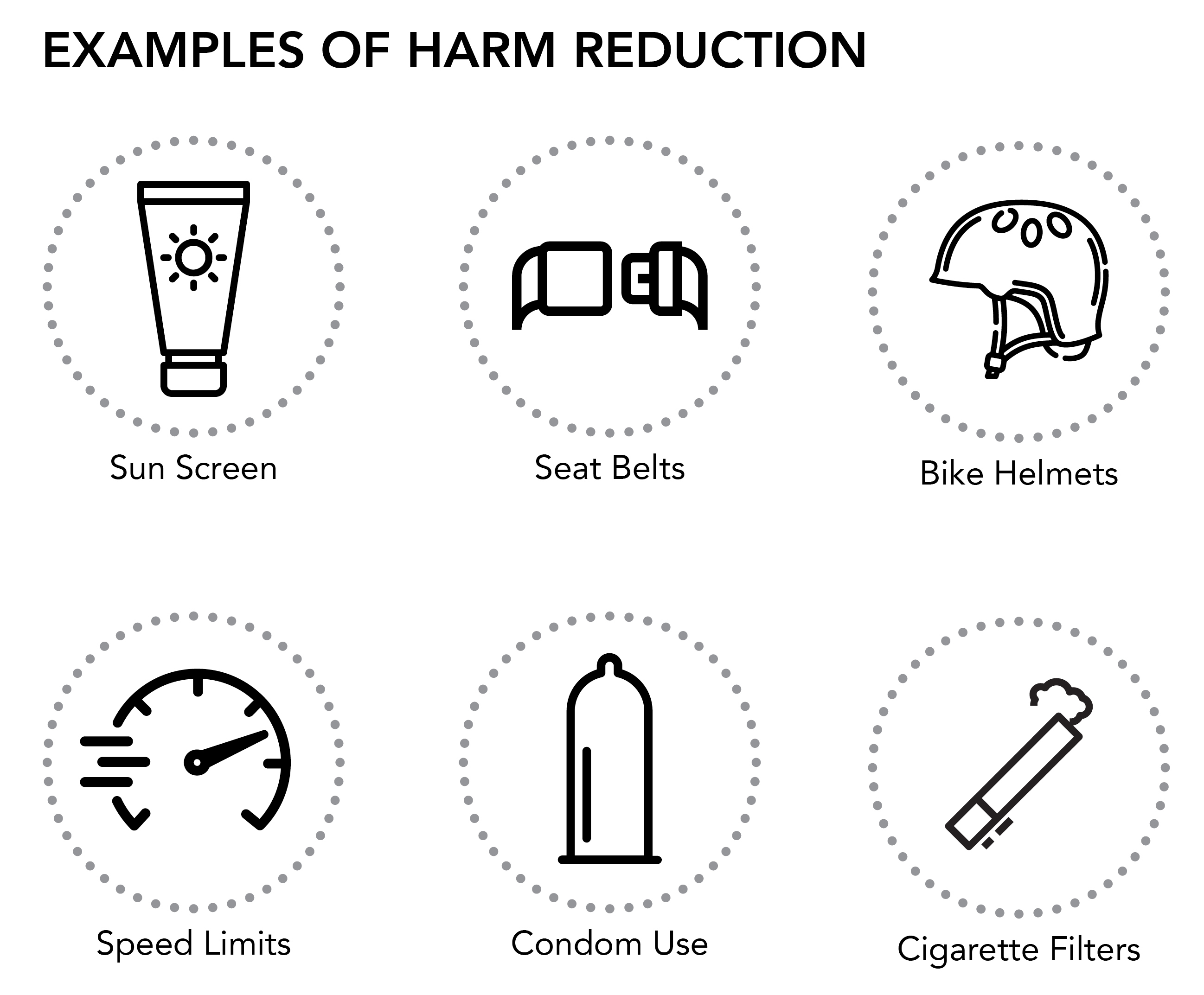Reading about these topics can be hard. If you find yourself needing support, our Mental Health Resource page has a list of local and online supports.
Substance Use Health
Substance use health refers to the overall well-being and safety of individuals in relation to their use of drugs or alcohol. This concept promotes safer use practices, preventing harm, supporting recovery, and reducing the stigma associated with substance use. People use substances, such as controlled and illegal drugs, cannabis, tobacco/nicotine and alcohol for different reasons, including medical purposes; religious or ceremonial purposes; personal enjoyment; or to cope with stress, trauma or pain. Substance use is different for everyone and can be viewed on a spectrum with varying stages of benefits and harms.
Source: Health Canada © All rights reserved. Substance Use Spectrum Reproduced with the permission from the Minister of Health, 2024. URL: Substance Use Spectrum - Canada.ca
What is Stigma?
Stigma is a deep-seated cultural issue that leads to discrimination and unfair treatment of certain groups. It involves treating people as if they are less human or less valuable, often based on stereotypes. People who use drugs are one such group that faces this stigma. It can show up in the form of negative attitudes, shaming, or discriminatory language, and can also be seen in laws, policies and practices that unfairly target people who use drugs. Stigma can even be internalized, meaning that those who are stigmatized may start to believe the negative things said about them. Because of this stigma, many people who use drugs find it hard to live healthier and more connected lives, especially if their drug use is seen as excessive or problematic.
People who use drugs may:
- Face stigma and discrimination when trying to access healthcare, education, housing, and jobs;
- Find that the systems meant to provide services and support often shut them out;
- Encounter doctors, teachers, employers, and others who have fixed negative beliefs about drug use, leading to more discrimination, blame, and mistreatment;
- Internalize these negative attitudes, making it harder for them to seek help or believe that they can recover.
"I ♥ Someone Who Uses Drugs" Campaign

The aim of this campaign is to break down the stigma surrounding substance use and foster more open, honest conversations. By embracing the message "I ♥ someone who uses drugs," we highlight that individuals who use substances deserve compassion and quality care when accessing services. The “I ♥ someone who uses drugs” messaging has been adapted with permission from Manitoba Harm Reduction Network, developed by members of the Brandon Peer Advisory Council which includes the t-shirt, testimonial cards and buttons/stickers that we use in our campaign. If you want to challenge stigma and raise awareness about substance use health, try some of these strategies:
- Explore, learn and share information on substance use health, stigma, and person-first language with this printable resource
- TBDHU staff will distribute free promotional items at various community events. Look for us to get yours.
- Talk with your family, friends, colleagues, and others about substance use, emphasizing respect and understanding.
- Right-click the graphic above to save it to your desktop and consider using it in your email signature to show your support.
- Participate in local events focused on harm reduction, substance use, and overdose awareness.
- Advocate for the creation of safe spaces in your community where people can discuss substance use without fear of judgment or discrimination.
- Upcoming Learning Opportunities
-
Stay tuned for upcoming workshops listed here!
What is Harm Reduction?
Harm reduction is part of everyday life. Every time we take extra steps to stay safe when engaging in an activity that has some risk – such as wearing a seat belt while driving – we are using harm reduction tools and strategies.

However, harm reduction isn't just about safety measures. It also involves a compassionate, non-judgmental approach to health, recognizing that drug use is a complex issue tied to social inequities. Harm reduction services aim to minimize risks for people who use drugs by providing supplies, sharing information, and offering support through community connections. These services are designed to meet people where they are, helping them access health and social resources.
Key Values of Harm Reduction
- Accepts that substance use is part of our world and works to reduce harms related to using substances
- Focuses on decreasing harms instead of forcing a drug-free society
- Understands that substance use is complex and includes a range of behaviours
- Recognizes that some activities and ways of using substances are safer than others
- Gives people choice and access to options that help to keep people safe, alive and healthy
- Recognizes that colonization, poverty, racism, social isolation, trauma, discrimination based on gender or sexual orientation, and mental health affect people's ability to access services and lessen harms
- Recognizes that people are doing the best they can within their life situations
Resources
Please note this list of resources is for information purposes only. TBDHU is not affiliated with all of these organizations, and their inclusion in this list does not imply endorsement or approval of their views, services, or activities.
Pay attention to how you talk about substance use
- Changing how we talk about substance use (PDF)
- Overcoming Stigma Through Language: A Primer (PDF)
- Respectful Language and Stigma (PDF)
Learn more about the topic
Learn more about substance use, stigma and harm reduction. The following are links to some web sites and resources to explore.
Substance Use Health Fundamentals
- Substance Use Spectrum
- Toward the Heart
- CATIE Harm Reduction
- CAPSA Substance Use Health
- Harm Reduction - Thunderbird Partnership Foundation
- OAHAS Harm Reduction 101
- Canadian Substance Use Strategy
Online Learning
- Overcoming Stigma (CCSA) available in French and English
- Ontario Harm Reduction Network (OHRN)
Programs and Services
Advocacy
Speak out and support People Who Use Drugs (PWUD)
- If your organization serves PWUD, actively engage and listen to people with lived and living experience to improve and develop your services.
- Learn about how you can adopt trauma and violence-informed practices.
- Trauma- and violence-informed care: A tool for health and social service organizations and providers Equip Health Care: Research to Equip Primary Health Care for Equity
- Trauma-informed: A resource for service organizations and providers to deliver services that are trauma-informed Klinic Community Health Centre
- Join and support awareness-raising efforts in your community, such as Recovery Day.
